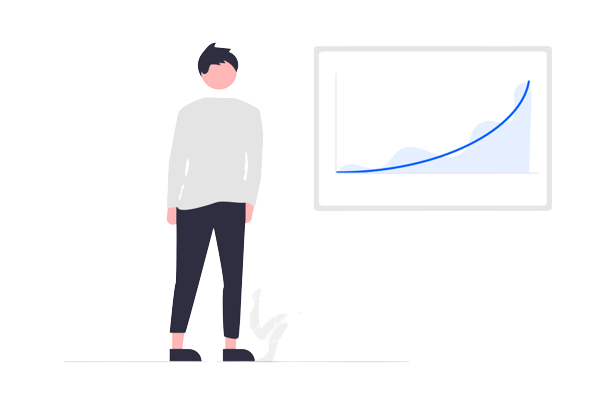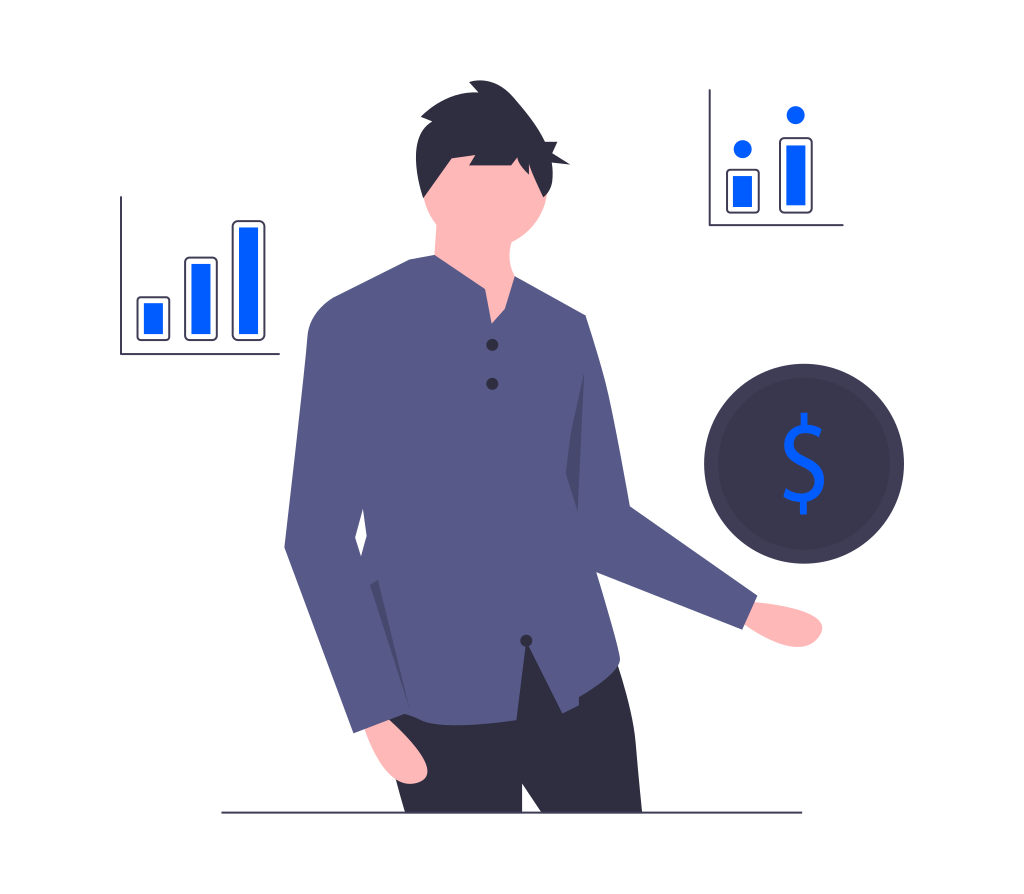Leverage Trading is your go-to source for trading the financial markets with leverage. Start learning and join our community of traders!
Active
Leverage Traders
Leverage Trading Guides
As seen on


What is leverage trading?
Leverage trading is a way of trading different asset classes with borrowed funds for increased buying power. It is used in many aspects of trading and does not require anything of the trader except that he or she puts up capital as collateral. The collateral used by the trader is called the margin capital and is the minimum investment needed to trade with leverage.
On this website, we will explain the full definition of leverage trading, how it works, when to use it, what are the risks, the costs, and also the legality of this type of investment strategy.
A margin contract is the most profitable but also the riskiest contract your can trade. Day traders use leverage to generate thousands of dollars in profits daily with strict risk management strategies.
What does leverage trading mean?
Leveraged trading means that you borrow funds when trading stocks, forex, options, futures, ETFs, and cryptocurrency, which allows the trader to access more capital than he or she currently has in his or her trading account. There are different types of ratios a trader can choose from and they range from 1:1 leverage up to 1:5000 depending on the broker.
For example, if a trader has deposited $100 in the account and uses 1:10 leverage, the position size would be $1000 which is 10 times more than he or she deposited into the account.
Trading comes with both added benefits and drawbacks as the increased position size can potentially lead to much larger profits and losses. One big benefit to trading with credit is that a trader can start with a relatively small account size and still be able to make good profits due to the increased position size.
At the same time, this increases the risk of losing money as margin works in both directions. The biggest drawback is that when the market goes against the trader, he or she will lose money faster than without the use of a multiplier.
How does leverage trading work?
Trading with leverage works by borrowing capital from your broker at different ratios with different margin requirements. As a trader, you can choose your level of borrowed funds and how much margin you want to put down as collateral. The more leverage you use the less margin you have to put down. It lets you trade a stock or a forex pair with more money and open bigger positions than you normally would.
On today’s brokers, it is completely automatic, and all you have to do as an investor is to choose how much capital you want to use. When it comes to stock trading or cryptocurrency trading there is usually a bar you can increase or decrease to adjust your level of borrowed money. In forex trading, the credit is already added by default and you will manage your risk with the position size you choose.
To trade any asset class you need to find a broker that offers to trade with leverage. Next up is to create an account, make a deposit, and choose the asset class you want to trade.
Leveraged trading works by amplifying potential wins and losses due to more buying power. For example, if you deposit $1000 in your stocks trading account and use a 20x ratio you can buy stocks for $20,000.
Here is the simplified calculation:
1000 x 20 = $20,000
When you buy a stock with more cash you stand to make much bigger profits but also losses. Let’s say for example that you use your $20,000 and buy stocks for all your capital and if the market increases 5% over the next couple of weeks you would make $1000. This means that you would make a 100% profit on your initial investment of $1000. The same goes for if the market would decline 5%, you would lose your initial stake of $1000.
Also read: How does leverage affect losses in trading?


Examples of leverage trading
To further describe how the concept works I will use a couple of examples. In these examples, we are going to see how trading with leverage affects your potential profit and loss when the market moves up and down.
Example 1
In this example, we will assume that our first trader has an account size of $100 and he is going to use 1:5, 1:10, and 1:20 leverage. The trader will open a position and earn a profit of 5% on the first trade and lose 5% on the second trade.
| Account size | 1:5 | 1:10 | 1:20 |
| $100 +5% win | +$25 | +$50 | +$100 |
| $100 -5% loss | -$25 | -$50 | -$100 |
As we can see clearly the more money you use the bigger your potential profit and loss become. It is possible to double your money with only a 5% increase of the underlying asset you are trading if using a 1:20 ratio. The same is true for the downside, you might lose more than you have invested with leverage.
The good news is that you can protect your downside with risk management tools such as a stop loss and the upside potential is pretty much unlimited so once you hit a good trade you better stick with it.
Example 2
In this second example, our trade has an account size of $500 and will trade stocks with a ratio of 1:25, 1:50, and 1:100. The trader will open the position size and earn a profit of 20% on the first trade and lose 20% on the last trade.
| Account size | 1:25 | 1:50 | 1:100 |
| $500 +20% win | +$2500 | +$5000 | +$10,000 |
| $500 -20% loss | -$2500 | -$5000 | -$10,000 |
At this level, the trades start to be very magnified, and very large profits and losses can happen very quickly. It is important to use some kind of risk management tool to stay in the game and once you hit a winner you should squeeze as much as you can from the trade.
Only using a 1:25 ratio results in a +$2500 when the underlying asset moves 20% in your direction. This is why crypto can be such a crazy gold mine and at the same time a terrible idea.
What is high leverage trading?
High leverage trading in the financial markets works in the same way as normal leverage trading with the exception that the leverage ratio is much higher.
An example of a high leverage ratio is 1:200, 1:500, and even 1:1000 with the latter being at the end of the scale offering huge amounts of capital to traders.
It is a common practice among both retail traders and professional investors, however, the way you use it is what is going to affect your results at the end of the day. Most beginners are drawn into the game with one thing in mind only, big gains.
High leveraged investing can indeed produce incredible returns it should also be mentioned that large returns are always followed by high risk but if you know how to position yourself and have spot-on risk management you can lock in trades well in the thousands of dollars daily.
Today, I will break down everything there is to know about trading with high leverage and at the end of this guide you will have a much better understanding of how it works and if it is a good choice for you.
It is not for the faint-hearted but for those of you who can withstand the pressure and the risk, this is an opportunity that you can’t miss. Use a good strategy to avoid range-bound markets and read this article to set yourself up for success.
What does high leverage mean in trading?
High leverage trading means that you trade the financial markets with an extreme leverage ratio of up to 1:1000 where your initial investment, or margin capital, is multiplied a thousand times.
High leverage trading requires less margin capital, or collateral, to trade large positions.
For example, should you make a deposit of $200 in your account and use a ratio of 1:1000, you will be able to control $200.000 of capital in an open position. That means that you can open a position worth $200.000 with only $200 in your margin account.
It essentially means that you borrow a lot of money from your brokers, exchange, or trading platform to trade with a much higher volume than what is offered in the traditional spot markets.
Trading on high leverage is possible in most tradeable assets but is most popular in forex, stocks, and crypto leverage trading where the operators have special deals with third-party liquidity providers to offer higher ratios and more capital than what is traditionally available.
This type of investing is very rewarding when you get it right and when you make a profit you get to keep all the gains from each position. On many occasions, you can double, triple, or even quadruple a small account in one single trade.
This doesn’t come without risks of course. Using a ratio of over 500x will significantly increase the risk of loss since the distance to your liquidation price is reduced to only a few points from your make-it-or-break-it level.
Benefits and drawbacks of leverage trading
There are several pros and cons of leveraged trading and in this section, I will go through the most important ones. As a trader, you should know what you are getting yourself into when starting to invest in tradable assets with margin.
In some cases, leverage trading is very helpful and you can gain make substantial amounts of money while controlling your risk in a good way.


Pros
Amplified profits: The obvious benefit is that you may increase your profits exponentially since you will be using more capital than you currently have. It is possible to double, triple, or even quadruple your money within a few hours. The profits also happen much faster and it might seem like you are earning money faster than normally. This is the effect of borrowed money.
Enables smaller accounts: If your investment account is less than $500 and you feel that it is not enough to make decent profits you will be able to access more capital in an instant to trade bigger. When used in moderation this approach is very useful and traders have had success even with small accounts.
Gives the trader flexibility: This is not an obvious benefit for most traders but when you start to develop your skills you will see that you need to branch out to several markets to find opportunities. If you put down only a small amount of margin for each trade you can spread out your risk on several markets and asset classes. This is nearly impossible if you are stuck with a small account size because you will be limited to using all of your capital in every single trade.
Cons
Bigger losses: This is the biggest drawback when it comes to using leverage and most traders are unaware of how fast they can lose money. Losses can occur much faster and they will be larger than what you have experienced before. This puts any new trader in an emotional rollercoaster and decision-making will become poor. It is possible to lose all your money and more which means that you will be in debt to your broker.
Higher fees: The fee you pay will always be on your full position size. This means that a bigger position size will come with larger fees. For example, if you trade with a 0.10% commission and your position size is $500 you will pay $0.5. If you trade the same account with 1:50 leverage your new position size will be $25,000 and your new commission will be $25.
Very underestimated: Most traders underestimate the power of this approach and many don’t take it seriously. This can cause unwanted losses very quickly due to high-stress levels and the incapacity to make good decisions. The standard trap traders fall into is when a position starts going in the wrong direction and the losses pile up. Here is when hope kicks in and the trader prays that the position will turn around. In most cases, this ends up in unexpected losses.


How to trade with leverage
Many questions are asked by beginner traders when they first get into investing long-term with leverage.
“Is it good to trade with leverage?” and “What is an optimal leverage for beginners to trade with?”
These are common questions and I will try to explain how to trade stocks, forex, crypto, futures, or any other asset class with increased buying power.
To get started with leverage trading you first need to qualify for an account and sign up with a broker depending on the market you want to trade. From here is easy to set up an account and start trading. The first step you need to do is to choose the amount of capital you want to deposit, this will be your risk capital. After you have verified your identity you are ready to make a deposit.
Before you enter the market, make sure that you have access to the correct risk management tools such as stop loss and negative balance protection. No investments should be made without either one of these tools. Depending on your analysis and research of the stock or contract you are investing in you can now go ahead and buy the underlying asset.
Trade management is learning how to trade stocks with leverage and once you have entered the position it is your responsibility to keep track of your P&L ratio. A good tactic when you are “in the green” or when your position is positive is to raise your stop loss to break even and from here you keep raising it to lock in profits.
Calculate profit and losses
When it comes to calculating your potential profit or loss you need to know the basics of how the mechanism works. If you use a 1:10 ratio, your profits and losses are going to be 10 times bigger. If you use a 1:50 ratio, your profits and losses are going to be 50 times bigger. That’s the basics.
Now, how much can you earn and how much can you lose with leverage trading? This question is more complicated because you need to know your full position size before entering the market.
Let’s say that your account size is $1000 and you are going to calculate your potential profit when trading with 1:25 credit. Let’s imagine two scenarios, one where you earn 2% and another where you earn 12%. Here is the calculation.
First, we calculate the new position size.
1000 x 25 = $25,000
Then we calculate the profit on that new position size.
25,000 x 0,02 = $500
In our first example, we made $500 from a 2% gain with only $1000 invested. Now let’s see how much you stand to make from a $1000 investment, 1:25 leverage, and a 12% market appreciation.
First, we calculate the position size.
1000 x 25 = $25,000
Then we calculate the profit on that position size.
25,000 x 0,12 = $3000
Related: Calculate position size crypto
To learn exactly how much of your margin capital you are investing in each leveraged position, use our leverage calculator to find out.
Associated risks
For those who are thinking about starting out with borrowed money to increase their buying power, there are several risks to be aware of and some tools of management. The most obvious risk is of course the risk of losing money. However, there are other more subtle risks that you should know. There is a risk of liquidation, unlimited losses, margin risks, and of course the well-known margin call.
Minimizing risks is the most important aspect of leverage trading and you should always use the proper risk management strategies. It’s not only about order types to protect you from unexpected losses, there are also strategies to avoid risk in regards to when you enter the market, how you enter the market, and where you are trading. A margin call calculator can be used to navigate your margin requirements and avoid getting a margin call.
Unlimited losses
Leverage should be used with caution when tried for the first time. If you are not careful your losses might mount up. The reason why it’s so risky is because of the high purchasing power which can sometimes be hard to control. Unlimited losses can theoretically incur if you are trading with a broker that does not operate with the right risk management systems such as stop-losses och negative balance protection. On some brokers or exchanges, it’s possible to lose more than your own money which would put you in debt with the broker. If you use very high leverage you can lose money in an instant.
Margin risks
When you trade with borrowed money you are putting down your own money as margin collateral which is always used first as risk. For example, if you have an account size of $1000 and you use a 1:50 leverage, your position size would be $50,000. If you maximize your purchasing power and enter the market with the full $50,000 you only need a 2% decline in the market to lose all your margin. This is the main risk when it comes to your margin capital.
To avoid risking your margin you can choose a lower ratio such as 1:5 or 1:10 and use a stop-loss to prevent unwanted losses. A stop-loss order is one of the best tools for any trader to control the risk. Even if you trade with the full size of $50,000, a stop-loss will stop you out at the smallest down movement of the market and your margin stays safe.
Margin call
A margin call occurs when your losses are getting close to the full amount of your initial margin. For example, if you trade your $1000 with 1:10 leverage and the market moves against you, your capital will fall negative pretty fast. If your losses amount to close to $1000 your broker or exchange will give you a margin call saying that you are out of risk margin and your position is about to close out.
There are three ways to deal with a margin call. First, you can deposit more money to save your position and give the market more room to move and perhaps turn around. Second, you can close out your position immediately and save what’s left of your margin. Third, you can do nothing and pray to god that the market will spare you this time. The third option is the worst and should be avoided at all costs. If you have more risk capital to use you can choose the first option and deposit more money if you have strong conviction in your analysis of the market. If you don’t have more risk capital you should close out the position and take the loss.
Liquidation
Liquidation occurs after you get margin called and the market keeps going against you. Liquidation in leverage trading means that your position will get closed out and liquidated. Your position will close out in a loss and all your margin capital will be lost.
This is the worst-case scenario for any trader or investor and should be avoided. Liquidations happen when a trader loses control over the liquidation price and of the position either due to a lack of experience in how leveraged trading works or because of some other error in trade management.
The best way to prevent a liquidation is to always use a stop-loss order to protect the downside of your trade. With a stop-loss you are always guaranteed to get out of the market at your own will, counting with some slippage. If you are a beginner trader you should paper trade with leverage or demo trade with margin before you start to see how the market will affect your position size.
Related: Liquidation price calculator
Leverage ratios explained
Leverage ratios can be difficult to understand. To make things as simple as possible I will show you how they work in an easy-to-understand table.
There are two ways of displaying these ratios:
- 10x
- 1:10
Both of these ratios mean the same thing, it stands for 10 times leverage. If you use a ratio of 1:10 you increase your account size 10 times, or your buying power is increased by 10 times. Let’s take a look at how a ratio of 1:10 affects your account size and position size.
| Account size | 10x / 1:10 | 25x / 1:25 | 50x / 1:50 | 75x / 1:75 |
| $100 | $1000 | $2500 | $5000 | $7500 |
| $500 | $5000 | $12,500 | $25,000 | $37,500 |
| $1500 | $15,000 | $37,500 | $75,000 | $112,500 |
| $5000 | $50,000 | $125,000 | $250,000 | $375,000 |
| $10,000 | $100,000 | $250,000 | $500,000 | $750,000 |
As you can see above, it’s pretty simple to see how the ratios affect the position size of the account. If your account size is $500 you multiply it by the leverage you use and that is the position size.


